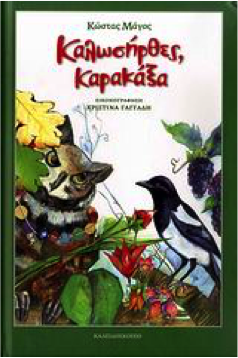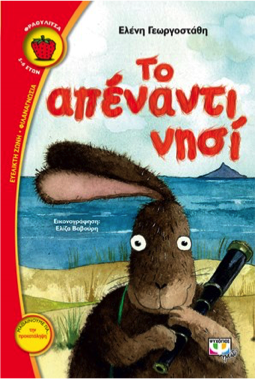Welcome, wherever you came from! (age range: 4-6))
Main Criteria:
• It focuses on pedagogy and school climate
• It includes activities aiming at cultural diversity in the kindergarten
• It develops cultural sensitiveness
• It promotes inclusive processes, increasing awareness, reducing barriers
AIms:
• To get familiar with their classmates and with their specific characteristics
• To understand that there are features that make us unique but also features that are common to all people.
• To observe the characteristics of other children and find similarities
• To understand the right to have a different identity (language, nationality, background ...)
• To get familiar with difference and accept it as something completely natural
• To recognize and respect diversity
• To be aware of the existence of prejudices and to develop strategies to deal with them
• To realize ignorance as the main cause of prejudice and consequently as a cause of racism
• To be expressed through multimodal, text, visual and theatrical activities
PROCEDURE:
Sub-Activity 1: «Welcome Magpie»

Author: Kostas Magos, published by: Kaleidoscopeio
A few words about the book:
A magpie comes to the forest, while the owl loses its colorful necklace. How can these two events be related and how do the fox, the hare, the bug, the woodpecker and other animals of the forest react? A story to get to know the way prejudices are created and reproduced, and the consequences they have in everyone's lives.
Questions to guide reflection:
What's wrong with the magpie?
Did the rest of the animals welcome her?
Why not?
Where did they rest upon to form an opinion?
What could be different in the story?
What do you find annoying in the story?
Do you find anything unfair?
How do things change in the end?
Are you happy with the end of the story?
Have you ever heard of anything similar?
Sub-Activity 2: «The island beyond the sea»

Author: Eleni Agrostathti, published by: Psychogios
A few words about the book:
Beyond the sea there is an island with green trees and blue waters. Its name is not known in the marshland, while everyone calls it "The island beyond the sea " and everyone knows that, it may be beautiful from afar, but it hides terrible secrets. No one can say what exactly these secrets are, but nobody wants to know. One day, the more daring and the most dreamy animal of the marshland, the hare, decides to discover them.
Questions to guide reflection
What about the hero of the story?
Why didn’t they visit the island across the sea?
Why did everyone have this estimate?
How had they shaped this opinion?
What was really happening on the island beyond?
What would you do if you were in the hare’s place, would you dare?
What would you change in the story?
GENERAL QUESTIONS
• Is there any child in the class exactly the same as another?
• Do you have common features with some children?
• Do you have common habits?
• Do you share any interests?
• Do we all have something in common?
• What is it?
• What would happen if a new child came to school?
• What practices would we utilise?
• Where would we get our information about him/her?
• What would we do to confront a bias if we manage to perceive it?
• Can we define bias and what it is that mainly creates it?
Students discuss and express themselves, they talk about their experiences and their personal moments. Have they felt similar feelings? Through the experiential exercises they put themselves in the heroes’ shoes. They are encouraged to observe, to record and gradually acquire intercultural skills.
Students discuss and express themselves, they talk about their experiences and their personal moments. Have they felt similar feelings? Through the experiential exercises they put themselves in the heroes’ shoes. They are encouraged to observe, to record and gradually acquire intercultural skills.
EXPERIENCE IN STEPS
Experiential activities related to the issues that evolve in the two stories
• Starting: We divide the classroom chairs in two rows facing each other. We ask the children to sit wherever they want. They usually sit next to their friends, but here we surprise them and make couples with the children sitting opposite to them.
5 experiential activities follow:
• Ping Pong: We play a game called "ping pong" with words and we ask children to observe the child sitting opposite them and to continue the phrase: “you have ...” One child speaks after the other and they express themselves about their characteristics, for example “you have long hair” or “you have blue eyes” or “you have a beautiful face” etc.
• Your portrait: We give a piece of paper to each of them with their name on it. We ask them to change papers with the child sitting opposite and to draw each other as the music plays. When the music stops, they give the portrait to the child they drew.
• Group portraits: Then we ask the children to leave their chairs and we placet a paper with a face outline and a marker on each chair. The children move alongside the chairs while the music plays and when the music stops the children also stop in any chair they face and we ask them to start drawing a portrait they imagine. The music starts and they move and when it stops again they continue the portrait that happened to be on the chair they face. The process ends when the portraits are completed. Then we all observe these strange portraits together, the faces that are none of us but they express all of us as they have elements and drawings from all the children. We exhibit the portraits in a common view.
• The burning chair: We remove a chair and ask the children to move with the music. When the music stops a child doesn’t find a chair to sit on and he/she tells us his favorite color, his favorite game, activity or favourite animal. We repeat it as many times as we want. If some children did not have the chance to play, we ask them the same questions, so that they do not feel excluded.
• Catch me: We play the traditional game “blind man's buff” in a variation. A child closes his/her eyes and the other children are guiding him/her making sounds. When the “blind” child manages to catch them he/she has to recognize them only by touching them and then they play the blind man. They get familiar with the difficulties of blind or visually impaired people.
• The children listen to the 1st story while they are watching the narrative in the sign language from , so that they become familiar with this language. They are experimenting to decrease or shut down the sound to sense the difficulty of people who cannot hear.
• The children watch the 2nd story in a puppet-theater or a theater with objects where the teacher takes a role (theatre technique: a teacher in role) and actively participates in the narrative by raising questions.
• We raise a discussion that focuses on differences and similarities, diversity and the creation of stereotypes and the gradual transformation into bias. We negotiate with the children the terms of "reputation" and "ignorance".
Afterwards we deal with visual representations of the stories or theatrical performances of some scenes of the story. Children listen to the song "There are hands", and they write their own songs respectively for the kind of hands they prefer and the actions they prefer.
We find links to acal historical events where difference was targeted and ignorance and prejudice led to crimes against the human species, such as Nazism.
Multimodal (TECHNOLOGICAL SUPPORT AND OTHER SUPPORT)
PC, Projector, slowmotion, moviemaker.
LINKS TO CURRICULUM:
Experiential Learning, Collaborative Methods, Interdisciplinary approach
Further development
The children make their own stories that present heroes that deal with the same dilemmas as the heroes of the stories, they illustrate them or present them with sound and image with the slow motion technique.
They make videos and small texts against racism.
Materials and digital tools
https://www.youtube.com/watch?v=vhyrycazOEI